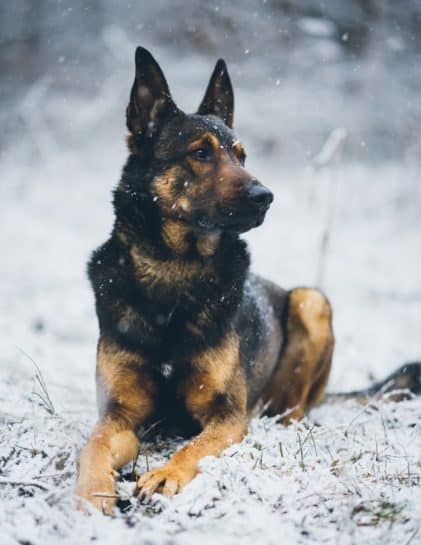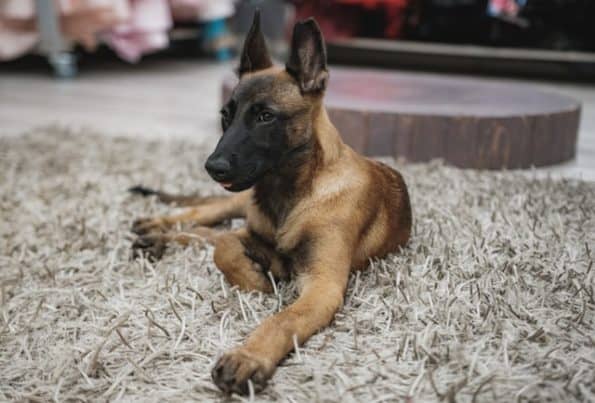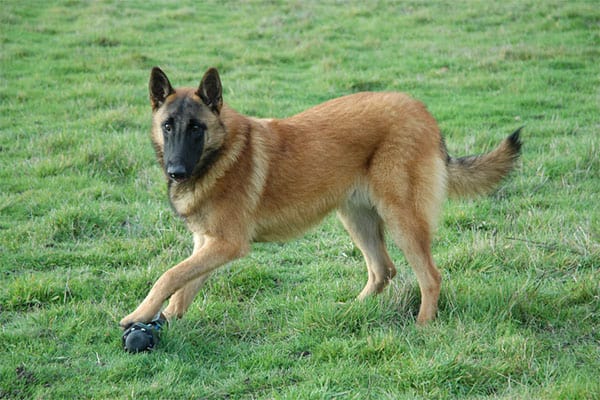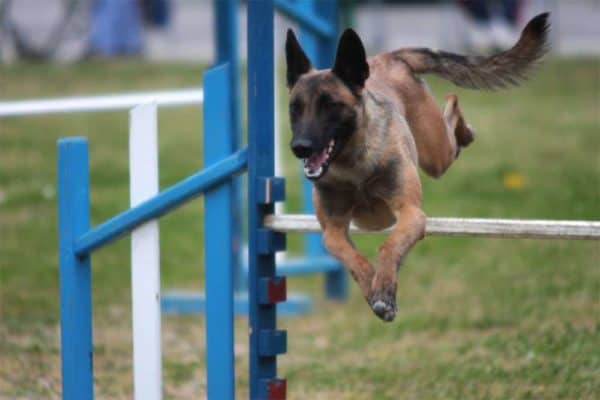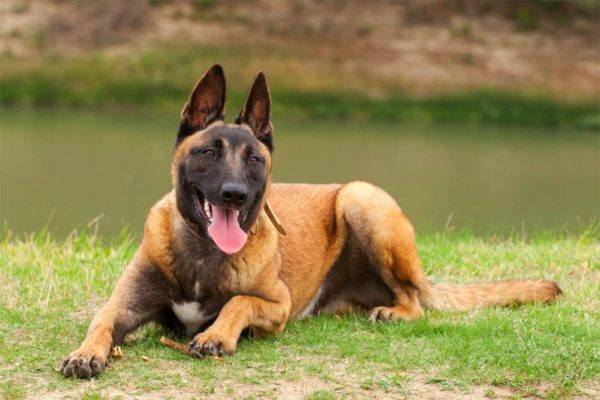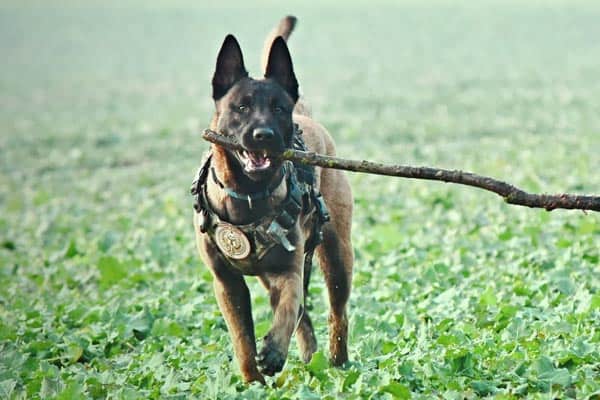Belgian Malinois: A Famous Protection K9 You Probably Don’t Recognize
The Belgian Malinois is often confused for their much better-known lookalike, the German Shepherd, as the American Kennel Club (AKC) highlights.
To be fair, both dogs excel in working dog roles worldwide. Both are stellar K-9 athletes and unparalleled in military, police, and private protection work.
But the Belgian Malinois is a breed apart from even the popular GSD.
In fact, in many militaries, police, and private security sectors, Malinois is the top dog in every way and exceeds even the GSD in popularity.
Yet most dog lovers don’t know much, if anything, about the Belgian Malinois breed.
The breed only started to become known in general circles in 2012 when SEAL Team Six took a Malinois on the raid to capture Osama Bin Laden.
What makes the Belgian Malinois such a superlative working K-9? Can these dogs also be good family pets?
What type of training, home environment, yard, exercise, and care does the Belgian Malinois dog need? Let’s find out now.
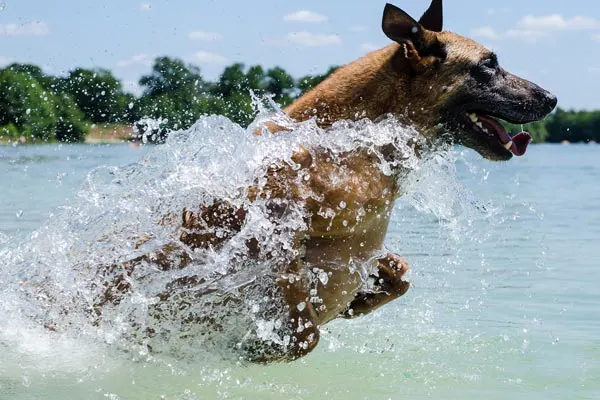
Watch a Belgian Malinois K9 Trainer Talk About the Breed
In this short and informative YouTube video, a professional K9 trainer with a military background discusses how he has trained his own Belgian Malinois.
The trainer also talks about why the owner’s temperament and attitude are just as important to success in training a talented dog-like Malinois.
History of the Belgian Malinois
The Belgian Malinois got their breed start in Belgium, as their name indicates.
Interestingly, the Malinois is just one of four herding working dog breeds that are all genetically related.
The four dog breeds are the Belgian Tervuren, the Belgian Groenendael, the Belgian Laekenois, and, of course, the Belgian Malinois.
Interestingly, inc some parts of the world, these four dog breeds are treated as basically one breed and are classified together as “Chien de Berger Belge.”
The Belgian Malinois actually only became recognized by the American Kennel Club (AKC) as a purebred dog breed separate and apart from their relatives in 1959.
Today, fans and owners often call their Malinois “Mals” for short.
While they were originally developed to help people by herding and guarding livestock when the need for that work lessened the Malinois quickly found a new calling in military, police, and security work.
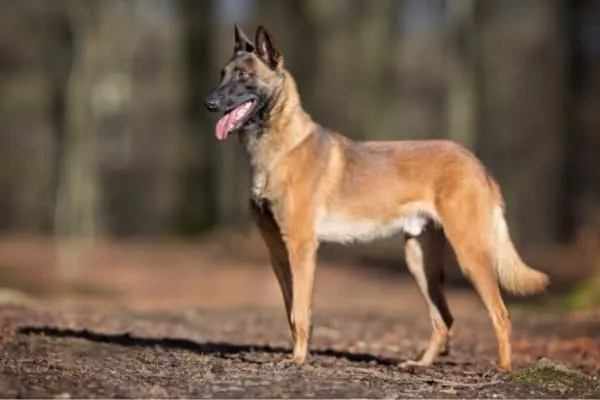
Belgian Malinois Size, Height, and Weight
The Belgian Malinois dog is similar in appearance to the German Shepherd dog in some ways.
But if you look more closely, you will start to notice key differences. For example, the Belgian Malinois is more slender with finer bones and a sleeker, shorter coat.
Overall, the Belgian Malinois typically weighs between 40 and 80 pounds as an adult dog. One thing that is quite unique about Malinois dogs is the size difference between genders.
Male Mals can weigh up to 20 pounds more than female Mals.
These dogs typically stand between 22 and 26 inches tall (measured from paw pads to shoulder tops).
They have slender, long legs, and slender long muzzles, and balanced square bodies – solid and well-muscled but never bulky.
Belgian Malinois Personality and Temperament
While the Belgian Malinois admittedly looks similar to the German Shepherd dog (especially in puppyhood), in terms of personality and temperament there are notable differences.
Specifically, as Van Hendrix K-9 Training points out, many trainers and owners who are familiar with both dog breeds call the Belgian Malinois a “German Shepherd on steroids.”
This is not to imply that Belgian Malinois dogs are given medications or drugs. Rather, it is a reference to the intensity of Mal’s personality and temperament.
These dogs are working K-9s to their core. Their intensity and drive to stay active and busy are such that it can take a special person or family to keep Malinois dogs as “pets.”
This is especially true if the handler or owner has other responsibilities that can interfere with the ability to give the Belgian Malinois sufficient daily exercise, training, and activity.
As the American Belgian Malinois Club explains, Mals want and need to be with their people at all times.
These dogs do not do well with boredom or loneliness and are likely to become destructive and problematic. This is the top reason why many Belgian Malinois dogs are relinquished and rehomed.
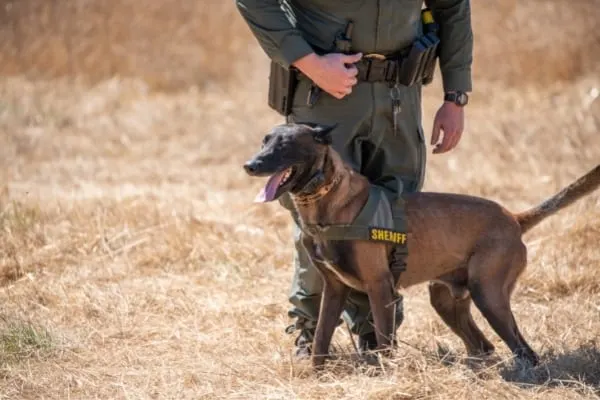
Belgian Malinois Socialization and Training Needs
As you watched in the YouTube video earlier in this article, the Belgian Malinois needs a lot of socialization and training to learn the difference between a friend and a potential threat.
It is important to understand that the Malinois has been bred for centuries to operate on high alert while herding and guarding livestock animals.
These dogs don’t really have an “off” setting when it comes to evaluating what is going on around them and protecting “their” people.
As the American Belgian Malinois Club explains, socialization and training should begin in puppyhood to help these dogs acclimate well to life as a companion canine.
Belgian Malinois Exercise and Activity Level
The Belgian Malinois may be best-known in military, police, and security sectors, but these dogs are also phenomenal K-9 athletes outside of such formal working dog roles.
The American Working Malinois Association is a collective formed to promote opportunities for Mals and their owners to participate in K-9 athletics around the world.
At any given time, there is likely to be a K-9 athletic event going on somewhere.
Belgian Malinois and related Belgian herding breeds typically excel at all kinds of canine athletic events, from agility to rally to scent work and more.
Here is a list of some of the most popular canine athletic programs that can provide an active and energetic Belgian Malinois dog with regular outlets for their talent and energy.
As noted canine expert Stanley Coren, Ph.D., points out in Psychology Today, while it always rewarding to train and compete with a canine champion, there are many other equally valuable benefits to enrolling your dog in K-9 sports.
Conformation
Conformation is also called show. Show dogs are judged based on how closely they adhere to the purebred Belgian Malinois dog breed standard in both appearance and temperament.
Agility
As the name suggests, agility is one of the most athletically demanding and intense canine sports.
Agility events use obstacle courses to test each canine and handler team’s skills. The team has to navigate the obstacle course together and attempt to complete the whole course quickly and flawlessly.
Agility challenges can include teeter-totter platforms, tunnels, water features, stairs, hurdles, and more.
Nose work
Sometimes also called scent work, nose work tests the keenness of each canine competitor’s nose. The dogs have to sniff out each scent and then give a signal or alert to their handler.
While this is not the most athletically challenging of canine sports, it is very enriching to the dog in other ways.
Obedience
Obedience athletics measures how quickly and accurately the canine competitors can obey common commands.
Commands can include heel, stay, jump, retrieve, and more complicated sequences that incorporate several commands at once. Competitors are evaluated on the precision and speed of their responses.
Rally
Rally is similar to obedience in many ways, with precision and rapidity of the response being key components.
With the rally, the canine competitor and their handler move through a series of stations or rally points. At each station, the pair must perform the requested behaviors together.
Dock Diving
As crazy as it sounds, dock diving is a very popular canine sport! This sport requires the K-9 competitors to jump off a platform and retrieve an object from the water.
The dogs are evaluated on how quickly they can retrieve the object as well as how high and far they can jump.
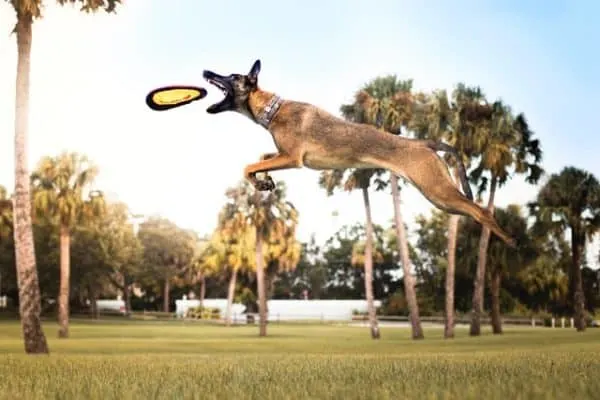
Flying Disc
Flying disc, which is sometimes also called disc dog, is a higher level of that old favorite most dogs and their owners love – frisbee.
In these events, there are varying levels of difficulty that range from a simple toss and retrieve to complex routines that feature a disc in each trick.
Freestyle
Freestyle is a fun event that gives the dog and their handler more freedom and flexibility to show off unique commands and skills together.
The event features a choreographed routine that is set to music. The team can put together their own freestyle routine within certain set parameters, complete with a theme and mood.
Herding
Not surprisingly, Belgian Malinois dogs excel at herding competitions, which requires the dog and human handler to work with a number of different types of livestock animals, moving them around through obstacles like fences or enclosures.
Flyball
Flyball competitions require dogs to work together in teams to retrieve – you guessed it – a flying ball. Usually, the ball is a tennis ball.
The dog teams must navigate obstacles like hurdles to chase and retrieve the ball.
Protection
One of the best-known examples of protection canine sports is Schutzhund, which is an ideal choice for the high-intensity Belgian Malinois.
The goal of protection canine sports is to evaluate how well the dog protects its handler through a variety of potential triggers and threats.
Belgian Malinois Coat Care and Grooming
The Belgian Malinois coat can vary a great deal but is always patterned in some way.
Fawn and fawn sable, red and red sable, and mahogany are the five standard coat color patterns according to the official dog breed standard.
Additional colors can include black, cream, gray, liver, brindle, gray sable, and cream sable.
The coat itself is short and neat all over.
However, this does not mean that the Belgian Malinois is a non-shedding breed. Quite the contrary – Mals have the traditional double layer working-dog coat that sheds year-round and seasonally.
The undercoat is a thick, soft, short, and insulating layer to keep the dog warm and dry.
The upper coat is made of coarser, water-resistant hairs that help repel moisture and abrasion and protect from sunburn, windburn, and pests.
The most intense shedding periods happen seasonally when the coat is transitioning from winter to spring and fall to winter. These periods are called “coat blows” and often take several weeks to conclude.
Luckily, the only coat maintenance Belgian Malinois owners usually need to spend any amount of time on is brushing.
Brushing the coat helps keep shed hair from covering everything you own and also helps distribute beneficial skin oils through the coat.
Belgian Malinois don’t typically need to be bathed that frequently unless they roll in something.
They may need their nails trimmed once in a while, but the more active a Mal is, the more likely the nails are to be self-maintaining.
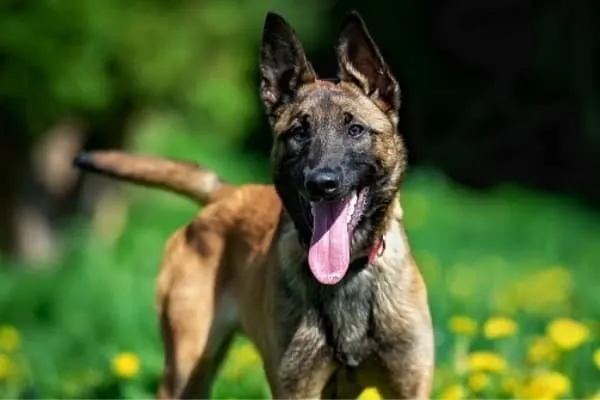
Belgian Malinois Health and Life Expectancy
As with most purebred dog breeds, the Belgian Malinois breed is known to be predisposed to certain genetic health issues.
The Canine Health Information Center (CHIC) database states that the Belgian Malinois has three main inherited health concerns for which pre-breeding screening tests are available: hip dysplasia, elbow dysplasia, and eye issues.
But just because the breed itself is known to be more susceptible to these three health issues doesn’t necessarily mean your Belgian Malinois will have them.
When you work with a reputable, responsible, and health-conscious dog breeder, that breeder will make sure all breeding stock (parent dogs) are tested for all testable health issues.
This way, you can be sure your Belgian Malinois puppy will not inherit one of these life-limiting conditions.
As the Animal Health Center explains, Belgian Mals can also be prone to dental disease, epilepsy, and – most concerning of all – gastric dilatation (volvulus), more commonly known as simply “bloat.”
Bloat can quickly become life-threatening. Dogs that are susceptible to bloat typically have deep chests that are narrow. Bloat happens when the stomach twists inside the chest and fulls up with gas.
The only reliable way to prevent bloat is to have your veterinarian do a simple operation to ensure the stomach is not able to twist. This operation is typically done at the same time a dog is neutered or spayed.
Happily, the Belgian Malinois has relatively few known health concerns when compared to many other purebred dog breeds today. Mal also has a surprisingly long life expectancy of 14 to 16 years.
Belgian Malinois with Kids and Other Pets
Because the Belgian Malinois is a working K-9 dog breed developed to herd and guard, these dogs tend to be less tolerant of small kids and other family pets.
This is especially true if you have other pets that are small, vulnerable prey-type “pocket pets” such as rodents or small mammals that your Mal might end up chasing.
Larger adult cats and other family dogs may be an exception.
If you have very young kids in your family, a Malinois may not be the best choice of a pet dog.
These dogs tend to be less tolerant of rough play from kids who are still too young to remember to handle dogs gently.
As well, because the Belgian Malinois has such a strong herding drive and protective instincts, you will need to do extra socialization and training if you have kids and they want to have friends over.
Most importantly, as Dantero Malinois breeder points out, your Mal will need to learn the difference between kids playing together and a potential threat situation that might lead to misplaced protective actions.
Overall, the best situation for a Belgian Malinois is a family with older kids or an adult couple or individual who has plenty of time to spend with their dog leading an active lifestyle.
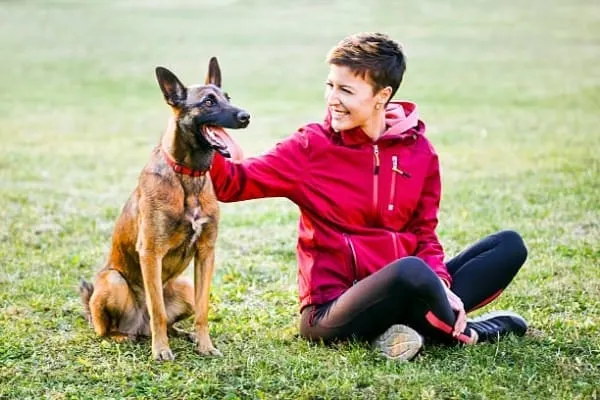
Is a Belgian Malinois the Right Companion Canine for You?
There is no one right or wrong answer to the question of this nature.
The Belgian Malinois is definitely not a “plug and play” pet dog – these dogs require a ton of training, socialization, and time to adapt well to the life of a companion canine.
But to the family or person who is willing and able to devote that time and put in the work, the Belgian Malinois will lay down their life for “their” people without hesitation.
Well-trained, well-socialized Mals are incredibly brave and loyal.
If you love to lead an active lifestyle, a Belgian Malinois dog is a great athletic partner for all kinds of outdoor sports as well as dog competitions.
The best way to learn more about the Belgian Malinois breed is to contact a local breeder or Belgian Malinois dog club and find out when you can visit and interact with the dogs.
By talking with other Belgian Malinois owners and dog breeders, you can determine if your available time and interests will be a good match with what these high-energy, intelligent and active purebred dogs need to stay healthy and happy.














